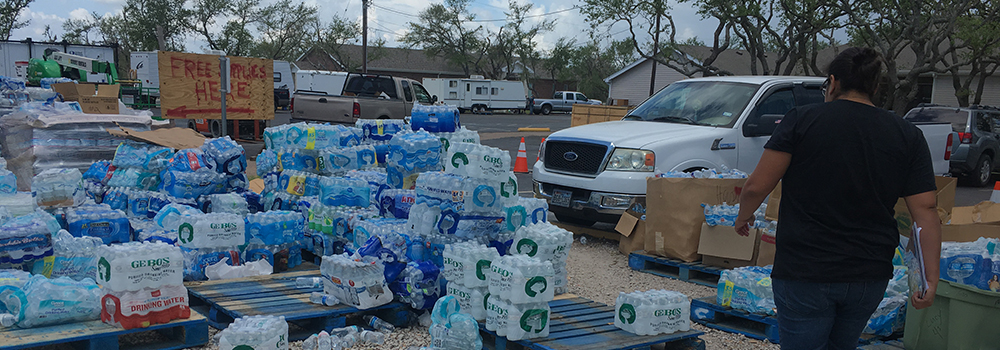 Mary Nelan, of University of North Texas, visits a donation center at a Rockport, Texas, church. ©Ronald Schumann, 2017.
Mary Nelan, of University of North Texas, visits a donation center at a Rockport, Texas, church. ©Ronald Schumann, 2017.
After disasters a number of place-based community resources spring up to serve the needs of those grappling with the impacts. These can be formal sites such as disaster recovery centers or donation distribution points. They can also be informal areas where people congregate organically based on services—such as a place for displaced residents to camp—that are available.
It might be reasonable to think that these points of convergence would also provide a sense of community that is lacking in the aftermath of a disaster that has destroyed a once-known environment. Recent research by University of North Texas professors, however, has found that’s not always the case.
In the most recently released research from the Quick Response Grant Program, Ronald Schumann and Maggie Nelan visited three locations along the south Texas coast one month after Hurricane Harvey to examine geographic and temporal dimensions of social capital and convergence behavior. In that timeframe, they found a broad lack of emotional support, limited interactions between residents and aid workers, and community recovery efforts that did little to support communal recovery.
While longer-term recovery might see greater community cohesion, this research shows opportunities for creating a more communal recovery—especially through the provision of emotional and mental health support—in the weeks immediately following disaster. Read the full report at the link below.